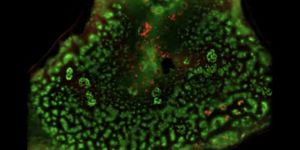Rising nitrous oxide levels is nothing to laugh about
It might cause us to laugh, but this news isn’t funny: nitrous oxide emissions are on the rise. As a potent greenhouse gas, nitrous oxide (N2O, or colloquially known as laughing gas) has a warming capacity 310 times that of carbon dioxide and is the third most long-lived greenhouse gas after CO2 and methane. It is also one of the principal ozone-depleting substances and while we may have thought we had fixed the hole in the ozone, rising nitrous oxide levels certainly aren’t a step in the right direction.
The news comes from a study by scientists from IIASA, the Norwegian Institute for Air Research (NILU), and several other institutions across Europe and the US and was published in Nature Climate Change. It reports that due to agricultural fertilizers with high nitrogen content, N2O emissions have risen in the last twenty years and the trend looks like it might continue.
To come to this conclusion, researchers analyzed data about N2O emissions from several global databases, including the Greenhouse Gas and Air Pollution Interactions and Synergies (GAINS) model. They found that N2O emissions grew globally by 1.6 (1.4-1.7) TgN y-1 (roughly 10% of the global total) between the time periods of 2000-2005 and 2010-2015.
"We see that the N2O emissions have increased considerably during the past two decades, but especially from 2009 onwards," says study lead author Rona Thompson, who is a senior scientist at NILU. "Our estimates show that the emission of N2O has increased faster over the last decade than estimated by the Intergovernmental Panel on Climate Change (IPCC) emission factor approach."
The authors blame agriculture as the culprit of this growing increase in emissions. From nitrogen fertilizers to nitrogen-fixing crops like soybeans, alfalfa, and peanuts, to the burning of fossil fuels and even biofuels, there is just more available nitrogen in the atmosphere than ever before.
"While the increased nitrogen availability has made it possible to produce a lot more food, the downside is of course the environmental problems associated with it, such as rising N2O levels in the atmosphere," Thompson explains.
Most important to note in the investigation’s conclusions is the discrepancy between the number given by the IPCC and the number the researchers found. This, they say, is because the IPCC method incorrectly assumes a constant emission factor, meaning when nitrogen input and nitrogen surplus is high, IPCC could underestimate emissions.
"We will have to adjust our emission inventories in light of these results, including those in the GAINS model," says study coauthor Wilfried Winiwarter. "Future increments in fertilizer use may trigger much larger additional emissions than previously thought -- emission abatement, as is already reflected in GAINS results, will, therefore, become even more prominent and also cost-efficient for such situations."
Sources: Nature Climate Change, Science Daily








